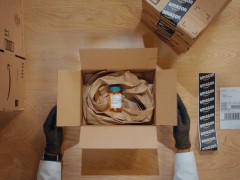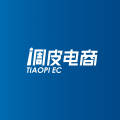What is the difference between lacquer tree and rubber tree?
漆树形态特征
落叶乔木,高达20M,胸径80CM。树皮初呈灰白色,较光滑,老则浅纵裂。枝内有乳白色漆液。羽状复叶,核果扁肾形,淡黄色,光滑。花期5-6月;果10月成熟。
橡胶树形态特征
大乔木,高达30米;富含乳汁。掌状复叶具3小叶,叶柄长达15厘米,顶端有2(3-4)腺体;小叶椭圆形,长10-25厘米,先端短尾尖,基部楔形,全缘,无毛,侧脉10-16对,网脉明显,小叶柄长1-2厘米。花序腋生,圆锥状,长达16厘米,被灰白色柔毛。雄花花萼裂片卵状披针形,长约2毫米;雄蕊10,2轮;雌花花萼裂片较雄花大,柱头3。花期4-7月,果期8-12月。蒴果椭圆形,径5-6厘米,有3纵沟。种子淡灰褐色,有斑纹。花期4-7月,果期8-12月。原产巴西,亚洲热带地区广泛栽培。福建、台湾、广东、海南、广西及云南南部均有栽培,并育出一些优质耐寒高产品种。橡胶可制轮胎、机器配件、绝缘材料、胶鞋、雨衣等4万种以上产品,为国防及民用工业重要原料。
生态习性的不同
漆树生态习性
喜光,不耐庇荫;喜温暖湿润气候及深厚肥沃而排水良好之土壤,在酸性、中性及钙质土上均能生长。不耐水湿,寿命短,萌芽力强,树木衰老后可萌芽更新。
橡胶树生态习性
橡胶树属阳性植物。性喜高温、湿润、向阳之地,生长适宜温度23-32℃,日照70-100%。耐热不耐寒、耐旱。在温度5℃以下即受冻害。
主要产地的不同
漆树主要产地
在中国除黑龙江、吉林、内蒙古和新疆外,其余省区均栽培;漆在印度、朝鲜和日本也有分布。
橡胶树主要产地
原产于巴西,主要分布于南北纬10°内,主产区是巴西,其次是秘鲁、哥伦比亚、厄瓜多尔、圭亚那、委内瑞拉和玻利维亚。已布及亚洲、非洲、大洋洲、拉丁美洲的40多个国家和地区。种植面积较大的国家有印度尼西亚、泰国、马来西亚、中国、印度、越南、尼日利亚、巴西、斯里兰卡、利比里亚等;而以东南亚各国栽培最广。中国引种栽培的植胶区主要分布于海南、广东、广西、福建、云南,此外台湾也有种植,其中海南为主要植胶区。
Professional answer
Morphological characteristics of lacquer tree
Deciduous tree, up to 20M, 80CM diameter at breast height. The bark is grayish white and smooth at first, and shallowly cracked when old. There is milky white lacquer liquid inside the branches. Pinnate compound leaves, drupes are flat kidney-shaped, light yellow and smooth. Flowering period is May-June; fruits mature in October.
Morphological characteristics of rubber tree
Large tree, up to 30 meters; rich in latex. Palmate compound leaves with 3 leaflets, petioles up to 15 cm long, with 2 (3-4) glands at the top; leaflets are elliptical, 10-25 cm long, with short tails at the apex, cuneate base, entire, glabrous, 10-16 pairs of lateral veins, obvious reticulate veins, and petiolules 1-2 cm long. Inflorescences are axillary, conical, up to 16 cm long, and covered with grayish white soft hairs. The calyx lobes of male flowers are ovate-lanceolate, about 2 mm long; there are 10 stamens in 2 whorls; the calyx lobes of female flowers are larger than those of male flowers, and there are 3 stigmas. Flowering period is April-July, and the fruiting period is August-December. The capsule is oval, 5-6 cm in diameter, with 3 longitudinal grooves. The seeds are light gray-brown with spots. Flowering period is April-July, and the fruiting period is August-December. It is native to Brazil and widely cultivated in tropical Asia. It is cultivated in Fujian, Taiwan, Guangdong, Hainan, Guangxi and southern Yunnan, and some high-quality cold-resistant and high-yield varieties have been bred. Rubber can be made into more than 40,000 products such as tires, machine parts, insulation materials, rubber shoes, raincoats, etc., and is an important raw material for national defense and civilian industries.
Different ecological habits
Ecological habits of lacquer trees
Like light, not shade-tolerant; like warm and humid climate and deep, fertile and well-drained soil, and can grow on acidic, neutral and calcareous soils. It is not resistant to water and humidity, has a short lifespan, has strong germination ability, and can sprout and renew after the tree ages.
Ecological habits of rubber trees
Rubber trees are positive plants. They like high temperature, humid, sunny places, and the suitable growth temperature is 23-32℃, with 70-100% sunshine. They are heat-resistant but not cold-resistant and drought-resistant. They will be frozen when the temperature is below 5℃.
Different main production areas
Main production areas of lacquer trees
Except Heilongjiang, Jilin, Inner Mongolia and Xinjiang, lacquer trees are cultivated in other provinces and regions in China; lacquer trees are also distributed in India, North Korea and Japan.
Main production areas of rubber trees
Originally produced in Brazil, they are mainly distributed within 10° north and south latitudes. The main production areas are Brazil, followed by Peru, Colombia, Ecuador, Guyana, Venezuela and Bolivia. They have been distributed in more than 40 countries and regions in Asia, Africa, Oceania and Latin America. The countries with the largest planting areas include Indonesia, Thailand, Malaysia, China, India, Vietnam, Nigeria, Brazil, Sri Lanka, Liberia, etc., and the most widely planted in Southeast Asian countries. The rubber planting areas introduced and cultivated in China are mainly distributed in Hainan, Guangdong, Guangxi, Fujian, Yunnan, and Taiwan, among which Hainan is the main rubber planting area.
Lacquer, also known as lacquer tree, dry lacquer (Sichuan Chinese Medicine Records), big wood lacquer, small wood lacquer (Hubei), mountain lacquer (Fujian, Hunan), plant alfalfa (Hunan), blind lacquer (Shandong), is a deciduous tree of the Anacardiaceae family.
In China, except Heilongjiang, Jilin, Inner Mongolia and Xinjiang, it is cultivated in other provinces and regions; lacquer is also distributed in India, North Korea and Japan.
Lacquer is one of the oldest economic tree species in China. Its seeds can be used to extract oil, and its wood is solid. It is a natural paint, oil and wood species. Lacquer liquid is a natural resin paint, known as the "king of paint".
Rubber tree, a plant of the genus Hevea in the Euphorbiaceae family, is native to the Amazon forest. China's special national rubber planting areas are mainly distributed in Hainan, Guangdong, Guangxi, Fujian, Yunnan and other regions. In addition, it can also be planted in Taiwan, among which Hainan is the main rubber planting area.
Rubber trees are deciduous trees with milky sap. They require an average annual rainfall of 1150 to 2500 mm, but are not suitable for planting in low-humid areas. They are suitable for growing in acidic sandy loam with deep soil, fertile and moist soil, and good drainage.
The economic life of seedlings is 35 to 40 years, that of budding trees is 15 to 20 years, and the growth life is about 60 years. Rubber trees are poisonous plants included in the Chinese Plant Atlas Database. Their toxicity is that their seeds and leaves are poisonous. Children who accidentally eat 2 to 6 seeds can cause poisoning, with symptoms of nausea, vomiting, abdominal pain, dizziness, and weakness in the limbs. In severe cases, convulsions, coma, and shock may occur. Cattle can also be poisoned after eating them.
The lacquer tree is different from the rubber tree. The lacquer tree (Toxicodendron vernicifluum (Stokes) F. A. Barkl.) and the rubber tree (Hevea brasiliensis) are from the Anacardiaceae family and the Euphorbiaceae family respectively. They are completely different families.
The lacquer tree is called the rubber tree, which may be a regional name, a folk name, etc.
The main problem with natural lacquer is that it solidifies too slowly. For modern industry, it greatly prolongs the production period of the product, which is not in line with economic benefits. In addition, the output of natural lacquer is not as much as that of chemical lacquer, which has to be taken from trees, with complicated processes and low output.
The lacquers used now are mainly chemical products, not natural, but synthetic, and most of the resins in them are synthetic resins.
Similar Q&A
recommend How to view sales of several months on Amazon?
E-c News Continuously pushing e-commerce knowledge to you








Latest Q&A More
-
Do I need a trademark to open a franchise store on Pinduoduo to sell books?
#Pinduoduo#
-
How to withdraw from a Pinduoduo store
#Pinduoduo#
-
How to withdraw from Pinduoduo merchants
#Pinduoduo#
-
How to pay fees when closing a Pinduoduo store
#Pinduoduo#
-
How to withdraw from Pinduoduo
#Pinduoduo#
-
Which store on Pinduoduo is authentic?
#Pinduoduo#
-
Which stores on Pinduoduo can buy genuine products?
#Pinduoduo#
-
How to check the store under Pinduoduo
#Pinduoduo#
-
How to receive Pinduoduo online game products
#Pinduoduo#
-
How to sell the electronic version on Pinduoduo
#Pinduoduo#
E-c News 2025-08-01 21:34:55

- African netizens use China Africa cross-border e-commerce platform for online shopping
- how is the new seller of cross-border e-commerce doing?
- how can cross-border e-commerce Amazon sell on Amazon platform without goods?
- Amazon store opening process and cost analysis!
- Amazon plans to expand its pharmacy business on a large scale and will add same day delivery service


